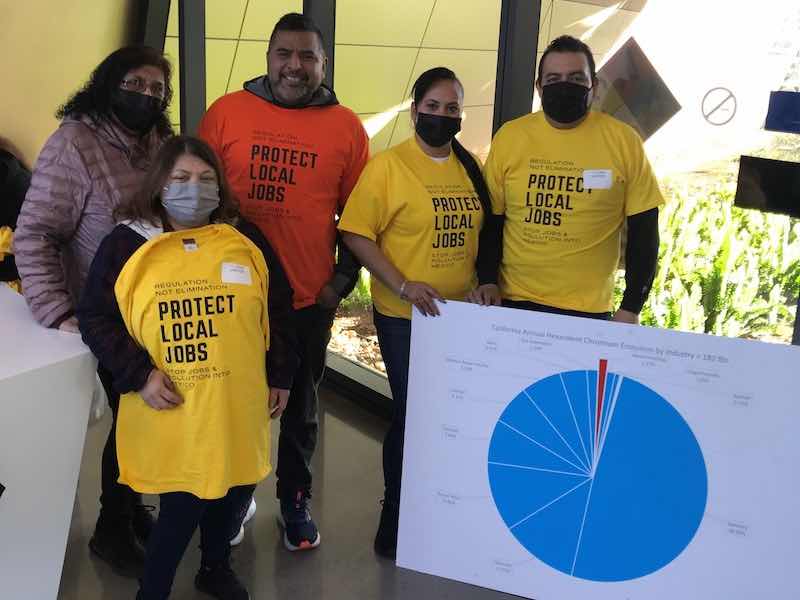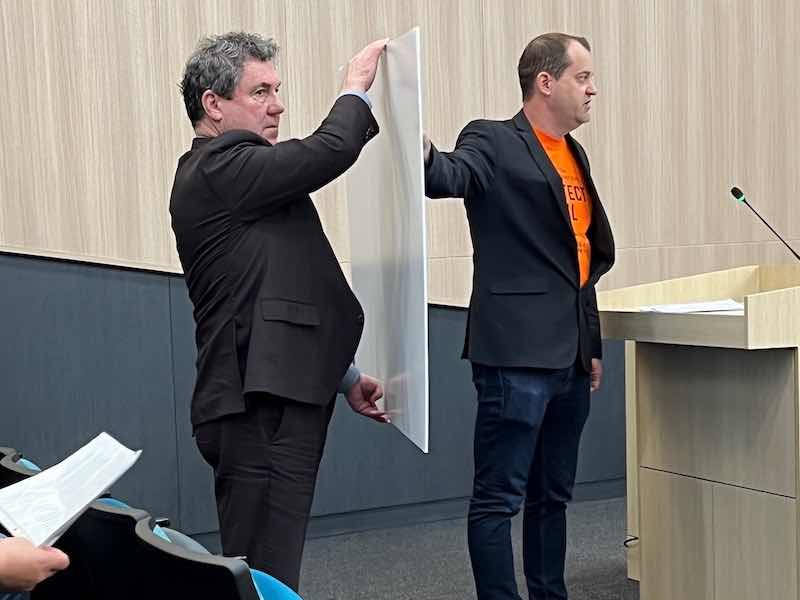More than 150 members of the finishing industry attended a hearing in California where an air quality board will decide the fate of hard and decorative chrome plating in the state.
 Bryan LeikerThe Jan. 27 hearing in front of the California Air Resources Board was to consider proposed amendments to the Airborne Toxic Control Measure for Chromium Electroplating and Chromic Acid Anodizing Operations.
Bryan LeikerThe Jan. 27 hearing in front of the California Air Resources Board was to consider proposed amendments to the Airborne Toxic Control Measure for Chromium Electroplating and Chromic Acid Anodizing Operations.
CARB is proposing to ban new facilities later this year and phase out existing hexavalent chrome facilities beginning in 2023. Among the proposed directives:
- Ban any new chromium electroplating and chromic acid anodizing operations starting after Jan. 1, 2024.
- Adding new requirements on Jan. 1, 2026, for hard plating and chromic acid anodizing facilities that implement building enclosure, new emission limits, install controls on qualifying tanks, and new source testing.
- Phase out the use of hexavalent chromium in decorative plating by Jan. 1, 2027
- Phase out the use of hexavalent chromium in functional plating (hard plating and chromic acid anodizing) by Jan. 1, 2039.
Making 'Inroads' into CARB's Decision
 Over 150 people working in the metal finishing industry attended the hearing."I think we made inroads with the board on the decorative side about the transition being only a few years away," says Bryan Leiker, Executive Director of the Metal Finishing Association of California.
Over 150 people working in the metal finishing industry attended the hearing."I think we made inroads with the board on the decorative side about the transition being only a few years away," says Bryan Leiker, Executive Director of the Metal Finishing Association of California.
About 75 speakers from the MFAC addressed the board, with roughly 65 in person at the hearing in Riverside and another 10 commenting via video. Leiker says they brought up issues about how the finishing industry accounts for just over 1% of all hex chrome emissions in the state, far less than other industries that use the natural element.
"After we did the presentation, the board talked to staff for about two hours afterward," Leiker says. "That can be good, and that can be bad. The things we're going to be looking out for, for now, is that items don't get added into the rule, such as fence-line monitoring. But what was good was about things such as the possible extension that can be added for the decorative side."
CARB says that the total number of facilities in operation currently that the ban would affect is 113, with 51 decorative chrome plating and 62 functional chrome plating facilities, 36 hard chrome plating, and 26 chromic acid anodizing.
The agency says that by banning these plating and anodizing facilities, they can also rid the state of possible PFAS issues, too.
Testimony From Those Who Rely on Metal Finishing

It wasn't just finishers who expressed concern over the proposed bans. Several industries that rely on metal finishing services wrote letters to the board, and some attended the hearing to express disagreement with the proposed rules.
"If these businesses close, it will negatively affect many businesses that rely on them," says Scott Henningsen, owner of Henningsen Machine Shop in Salinas. "This will force shops to send products to other states to have plating completed. The shipping to further distances will burn more fuel and cause unnecessary transportation and a waste of resources."
Several platers made direct pleas with the board to say their businesses would close if the measure passed. Brett Troncale of Cal-Tron Plating in Sante Fe Springs says his company has over 160 employees who may lose their jobs if the rule is passed.
"I'm the third generation in the plating business, following my father and grandfather," Troncale says. "This is what we know; this is what we have dedicated our lives to. We follow all rules and regulations and will continue to. We would much rather be regulated than shut down."
Clayton James, facility manager of King Industrial Hard Chrome in Fresno, that chrome plate cotton picker spindles, says they would go out of business if the rules are approved.
"The current regulations limit our emissions to be lower than 0.015 mg per amp hour, and our tanks' actual emissions are 0.0000058 mg per amp hour," James says. "Our facility's total emissions for last year were 12.46 mg, and our total limit allowed is 18,000 mg. We choose to keep our emissions low, and we take great pride in running a clean shop and keeping our employees safe."
CARB Pushing for Move to Trivalent
While the CARB staff and board have been fairly inflexible in how they will administer the rules, Leiker says they were able to bring new issues to light if the bans go through. CARB and other state officials have encouraged finishers to move to trivalent chromium as an alternative, but shops say their customers aren't ready to accept the newer technology."
"That this is not just for automotive," Leiker says. "They were looking at possible medical equipment and other industries. I think the chair said she's concerned about there not being enough time for the decorative shop to make the transition."
Chrome platers and anodizers have been under the microscope in California for many years as the state seeks to reduce hex chrome emissions. In 1998, South Coast Air Quality Management District's Rule 1469, Hexavalent Chromium Emissions from Chrome Plating and Chromic Acid Anodizing Operations, was adopted. Rule 1469 was most recently amended in 2021 and included additional measures to reduce fugitive emissions.
In 2017, CARB established the Community Air Protection Program (CAPP) in response to a state assembly bill that required more stringent air quality measures. CARB says AB 6174 requires them to enact a statewide strategy to reduce emissions of TACs in communities that experience disproportionate burdens from exposure to air pollutants.
"CARB's strategy is to reduce air pollution in these communities," the agency says. "The blueprint explains that — in addition to impacts from large industrial facilities such as oil refineries — communities suffer due to proximity to smaller sources like chrome platers, metal recycling facilities, oil and gas operations, and other sources of emissions, which contribute to localized air toxics impacts."
MFAC Pushing Back on Move Away From Hex Chrome
The MFAC has so far pushed back on CARB's insistence that the industry moves to trivalent chromium chemistry to replace hex chrome, saying OEMs and customers are not yet accepting tri chrome as a suitable alternative.
"I think we made some great inroads by our speakers about how these shops are going go out of business," Leiker says. "We made the point that the customer won't accept alternatives, and these shops are going to go out of business. And I think that resonated with the CARB board a little bit."
The CARB staff now has 15 days to make any changes or additions to the proposed rules before the board considers a final vote sometime over the next several months.
Leiker says the MFAC will pay close attention to any of those possible changes and will continue to work to change the mind of the CARB staff and board as much as it can.
"I think CARB is entrenched in banning hex grown in the state," Leiker says. "But the timeframe in which they do it for the decorative shots is now called into question."



































